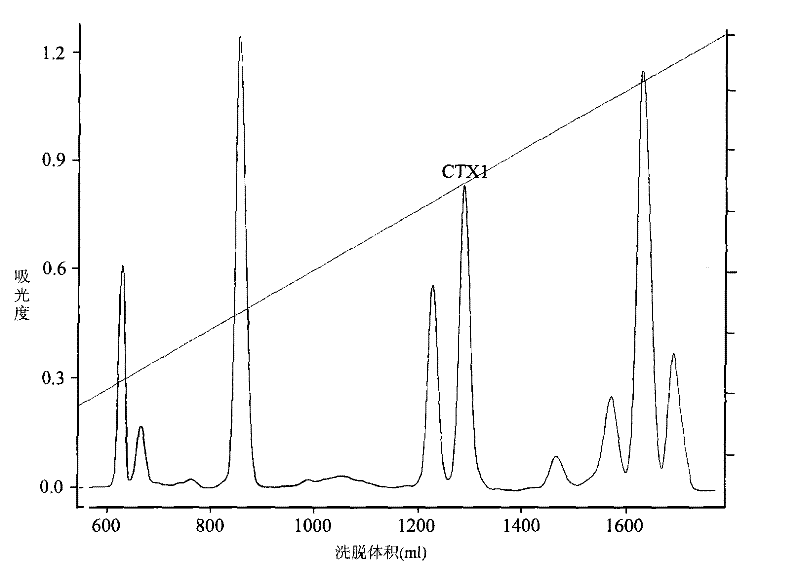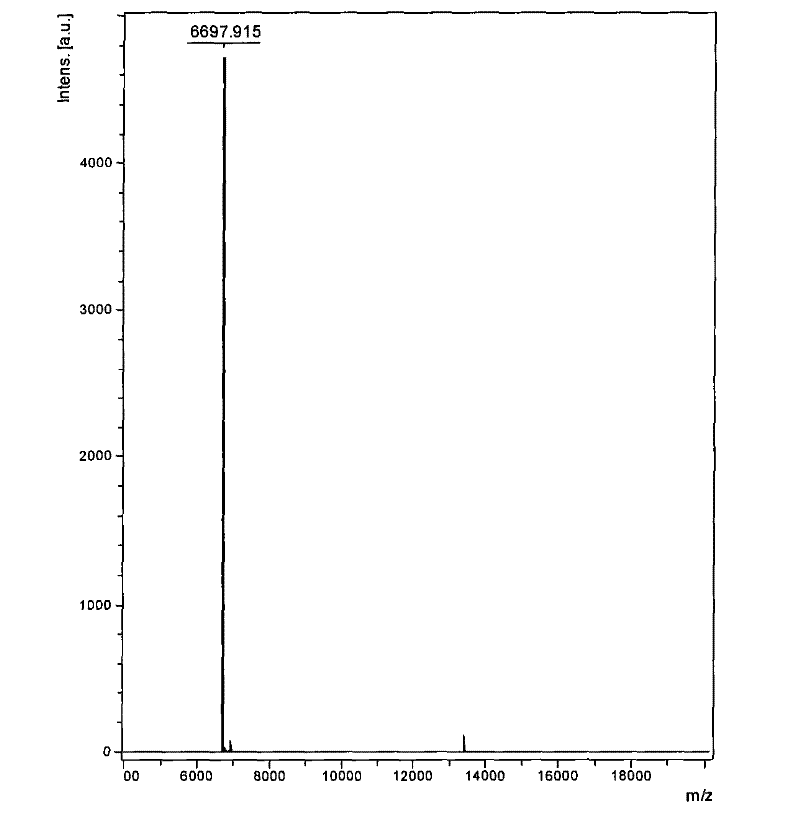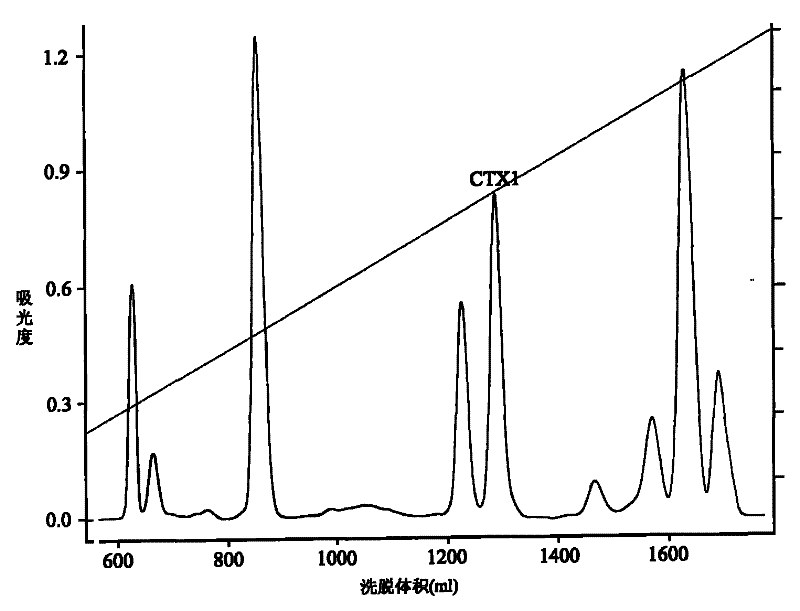Application of cytotoxin (CTX1) from snake venom to preparation of medicament for rehabilitating
A-CTX1, cytotoxic technology, applied in the application field of cytotoxin-CTX1 in the preparation of drug detoxification drugs, to achieve the effects of eliminating drug thirst behavior, significant drug effect, and controllable quality standards
- Summary
- Abstract
- Description
- Claims
- Application Information
AI Technical Summary
Problems solved by technology
Method used
Image
Examples
Embodiment 1
[0027] Example 1: Effects of different doses of CTX1 on the formation of CPP by morphine
[0028] After the rats produced a stable CPP to morphine, they were given CTX10.1, 0.2, and 0.4 mg / kg doses respectively for 8 days, and at d11, the CTX10.2 mg / kg and 0.4 mg / kg dose groups were compared with the morphine control group and the given doses. There was a significant difference between before and after CTX1 (P<0.05~0.01). After 8 days of continuous administration of CTX1, each CTX1 dose group could no longer have a preference or even disgust for the accompanying medicine box. CTX1 inhibits the CPP induced by morphine in rats (Table 1), indicating that it has a good detoxification effect on the thirsty behavior and rewarding effect of animals addicted to morphine.
[0029] Table 1: Effects of different doses of CTX1 on cpp in morphine addiction
[0030] Control group (normal saline) model group CTX1 low dose group (0.1mg / kg) CTX1 medium dose group (0.2mg / kg...
Embodiment 2
[0033] Example 2: The addictive effect of CTX1 on naloxone
[0034] Rats in each experimental group in Example 1 were injected intraperitoneally with 5 mg / kg naloxone to induce addiction on d18, observed for 40 minutes, and recorded and scored withdrawal symptoms (Table 2). Statistical analysis showed that there was a significant difference between the morphine group and other groups (P0.05). This result shows that CTX1 is not a substitute for morphine-like addictive drugs to exert its detoxification effect.
[0035] Table 2 The addictive effect of naloxone on the model group and CTX1 dose groups (x±s, n=8)
[0036]
[0037] ■P<0.01, vs 0.9%N.S control group ※P<0.01, vs CTX1 group ●P<0.05 vs 0.9%N.S control group andCTX1group
Embodiment 3
[0038] Example 3: The effect of CTX1 treatment on the body weight of addicted rats
[0039] After the rats were given morphine for conditioned place preference training for 8 consecutive days, the weight of the rats increased significantly less than that of the normal saline group treated in the same way, indicating that the rats had become dependent on morphine and affected the weight gain. Addicted rats were continuously given different doses of CTX for 18 days, and their body weight increased to varying degrees (Table 3). Among them, the body weight of the CTX10.2mg / kg and CTX10.4mg / kg dose groups increased significantly compared with that of CTX10.1mg / kg, respectively reaching 132.3± 2.0% and 139.2±3.7%, significantly different from the morphine group (p<0.01). The results show that: CTX1 can improve the body weight of morphine-dependent rats, improve their mental activity and diet, and there is a certain dose-effect relationship.
[0040] Table 3 Effect of CTX1 on body w...
PUM
| Property | Measurement | Unit |
|---|---|---|
| molecular weight | aaaaa | aaaaa |
| molecular weight | aaaaa | aaaaa |
Abstract
Description
Claims
Application Information
 Login to View More
Login to View More - R&D
- Intellectual Property
- Life Sciences
- Materials
- Tech Scout
- Unparalleled Data Quality
- Higher Quality Content
- 60% Fewer Hallucinations
Browse by: Latest US Patents, China's latest patents, Technical Efficacy Thesaurus, Application Domain, Technology Topic, Popular Technical Reports.
© 2025 PatSnap. All rights reserved.Legal|Privacy policy|Modern Slavery Act Transparency Statement|Sitemap|About US| Contact US: help@patsnap.com



